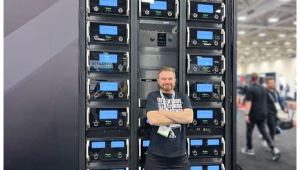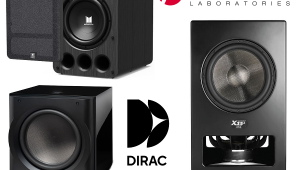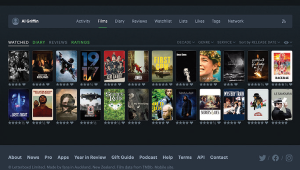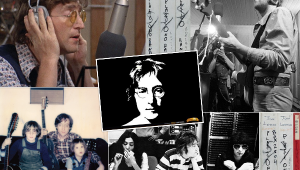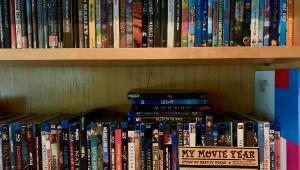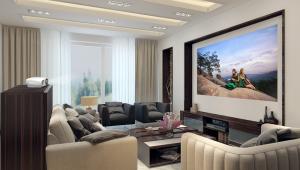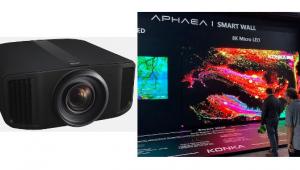Emotiva: Good Deal or the Real Deal? Page 2
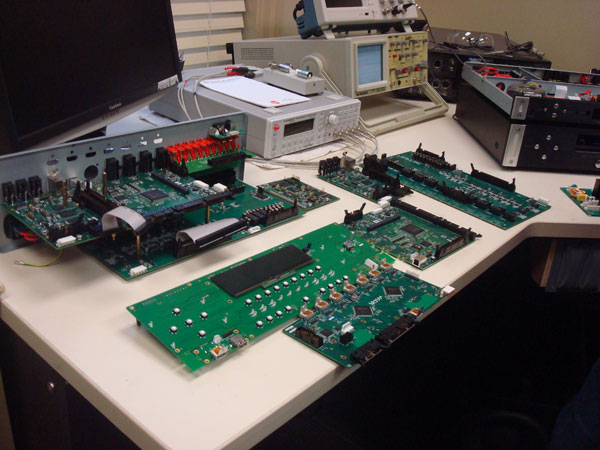
An exploded view of Emotiva’s new XMC-1 surround processor.
My day and a half at Jade made evident that Laufman and Vaughn are, above all, audiophiles and music lovers. They are clearly jazzed about making new toys and bringing them to market, and they seem to be on a roll: Emotiva now has a line that includes preamps and surround processors; monoblock, stereo, and multichannel amplifiers; digital-to-analog converters for computer audiophiles; and speakers, all developed internally. A line of Emotiva Pro professional audio products includes powered studio monitors in several sizes. Then there’s the Sherbourn family, targeted toward custom integration, which includes a new surround processor, several amplifiers, and a soon to be released receiver. As I toured two of the company’s three buildings and passed through their offices and various engineering labs, listening rooms, and home theaters, I was greeted by many a naked component with its top stripped off to reveal its high-tech innards, and build quality that beckons back to the old days of hi-fi — heavy aluminum milled faceplates with etched (not printed) brand logos, machined metal knobs instead of the cheap plastic commonly found today, and well thought-out circuit topologies dropped into cleanly-wired and dressed chassis. Blue lights are a themed design feature across all the Emotiva products. At one point, we wandered into the small photo studio where they were shooting images of a new reference stereo amplifier, the XPR-2. It’s rated at 600 watts x 2 channels into 8 ohms or 1,000 watts into 4 ohms, both channels fully driven. The custom toroidal power transformer below the top cover was a thing of beauty, and contributed to the unit’s 92-pound weight. Behind the face of the front panel display were vertical LED power meters, and the backside sported some slick binding posts I’ve never seen before, along with high quality input connectors. The thing virtually screamed pride of ownership, and even without hearing it, I wanted it. It seemed like it could easily have fetched considerably more than its $1,700 asking price for this level of power and build quality.
Of course, the proof is in the sonics, and I can’t say how this or any of the other Emotiva electronics components really sounds until we test them in controlled conditions using our own reference systems. On the other hand, I was impressed with how the company’s Stealth 8 powered studio monitors brought their large listening room to life. Sold under the Emotiva Pro brand, this is the latest and largest in a line that uses high-velocity folded-motion tweeters similar to those that have pleased us recently in speakers from GoldenEar, MartinLogan, and Adam Audio. The Stealth 8 mates one of these with an 8-inch woofer in a ported box, powered by separate 200 watt RMS Class A/B amplifiers firing each driver. They are heavily braced and damped internally (we peeked inside a speaker with its amp removed), and gorgeous to look at with their black satin finish and sculpted baffles designed to minimize reflections. Mated with one of Emotiva’s powered subs playing just loud enough to bolster an already full bottom end, they had me and my press colleagues raising our eyebrows.
None of this is meant to suggest that you should go out tomorrow and buy Emotiva (although you have the option to do so mostly risk-free thanks to the company’s liberal return policy). But I couldn’t shake the feeling that this is a company with its heart in the right place—that is, in delivering an old-school, high-quality audio experience to its customers at a fair price. At a time when mainstream audio components, even top-end AVRs from the major brands, are having their corners cut in obvious ways, Emotiva’s approach is a welcome turnaround. Theirs is an entrepreneurial, well-funded, and smartly run operation with sophisticated engineering resources and access to state-of-the-art manufacturing facilities. And based on the products we saw in development and those that were hinted at, it is a firm that is always looking ahead, not just trying to figure where it’s financial opportunities are, but also where it can make a meaningful difference in the market and bring the joys of great sound to more people.
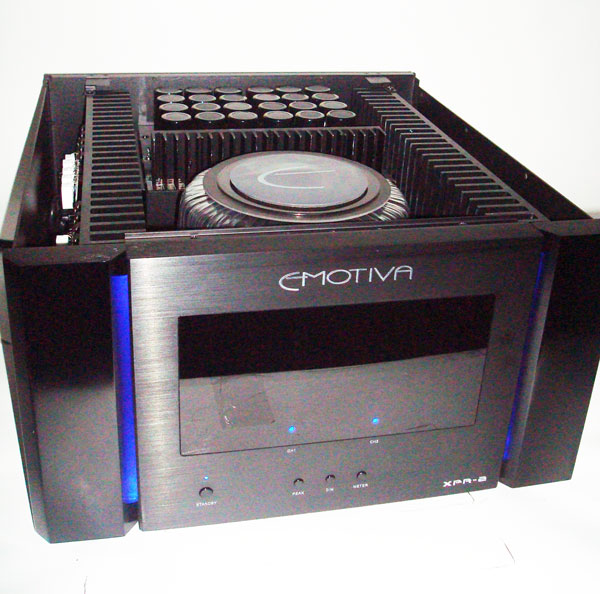
Build quality of the XPR-2 1200-watt stereo amp was evident beneath the top panel.
As a journalist, I’ve trained myself to always keep watch for the defining moment—the one that truly captures the essence of whatever story I’m reporting. It is usually not scripted, which is what makes it genuine. For this story, that came when Laufman plopped himself down on the carpeted floor of one of his demo rooms in front of the equipment rack and speakers, crossed his legs, and started playing one tune after another from the hard drive of a MacBook loaded with music. After honoring a few requests from his guests, he moved onto some favorites of his own, and he was as genuinely excited (or more so) to tell us why he loved each track or artist as he was to brag about his gear. It was a refreshing reminder of when I started my editorial career in the early 1980s at a small high-end audio magazine, and used to watch one startup after another waltz into our listening rooms with some new speaker or amplifier they were sure would set the world on fire. Those meetings were always about the music first—we couldn’t wait to get things hooked up to see if it would reveal some fresh nuance in our reference recordings. That was a time when we listened exclusively on vinyl LPs, which are now enjoying a surprising comeback. Perhaps with audio companies like Emotiva in the mix, a full return to the good old days won’t be far behind.


